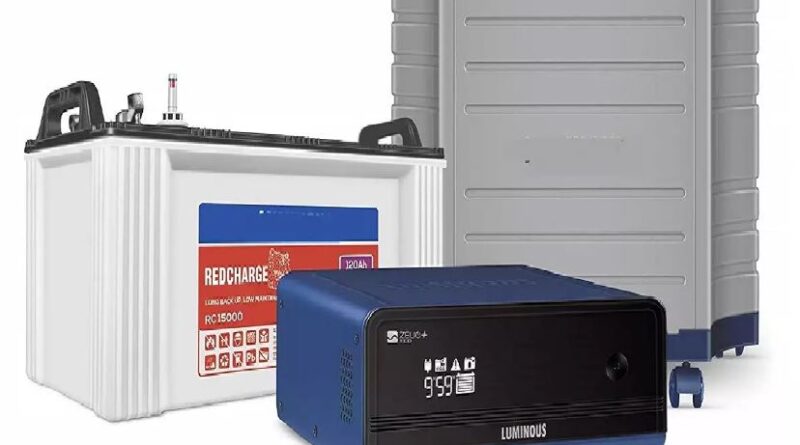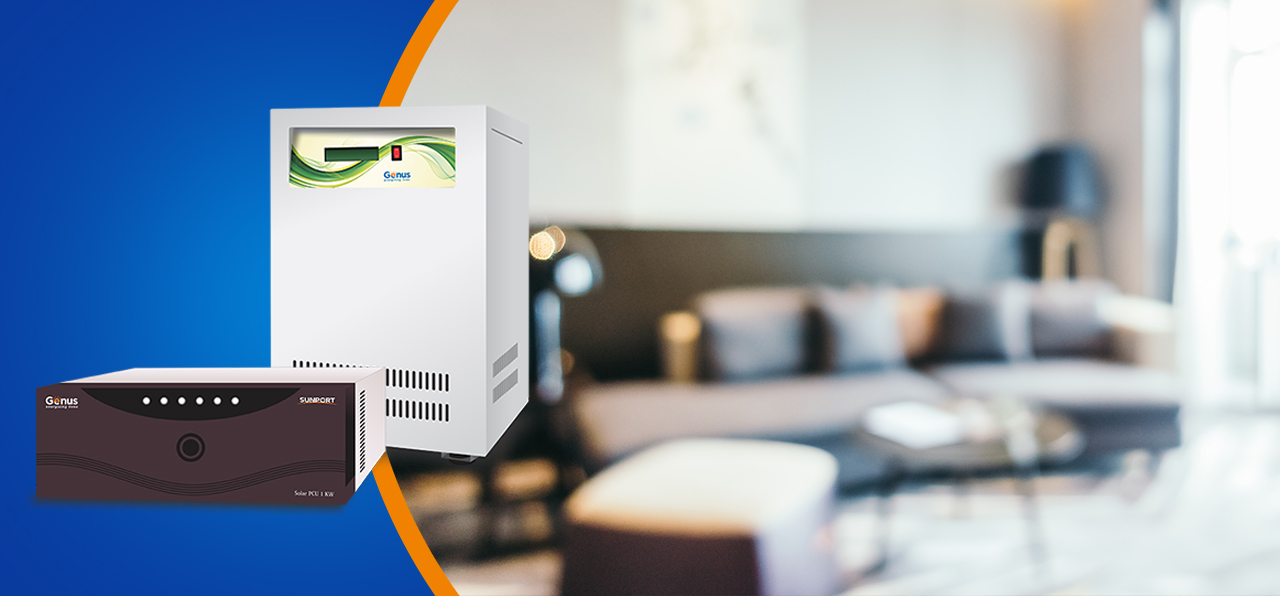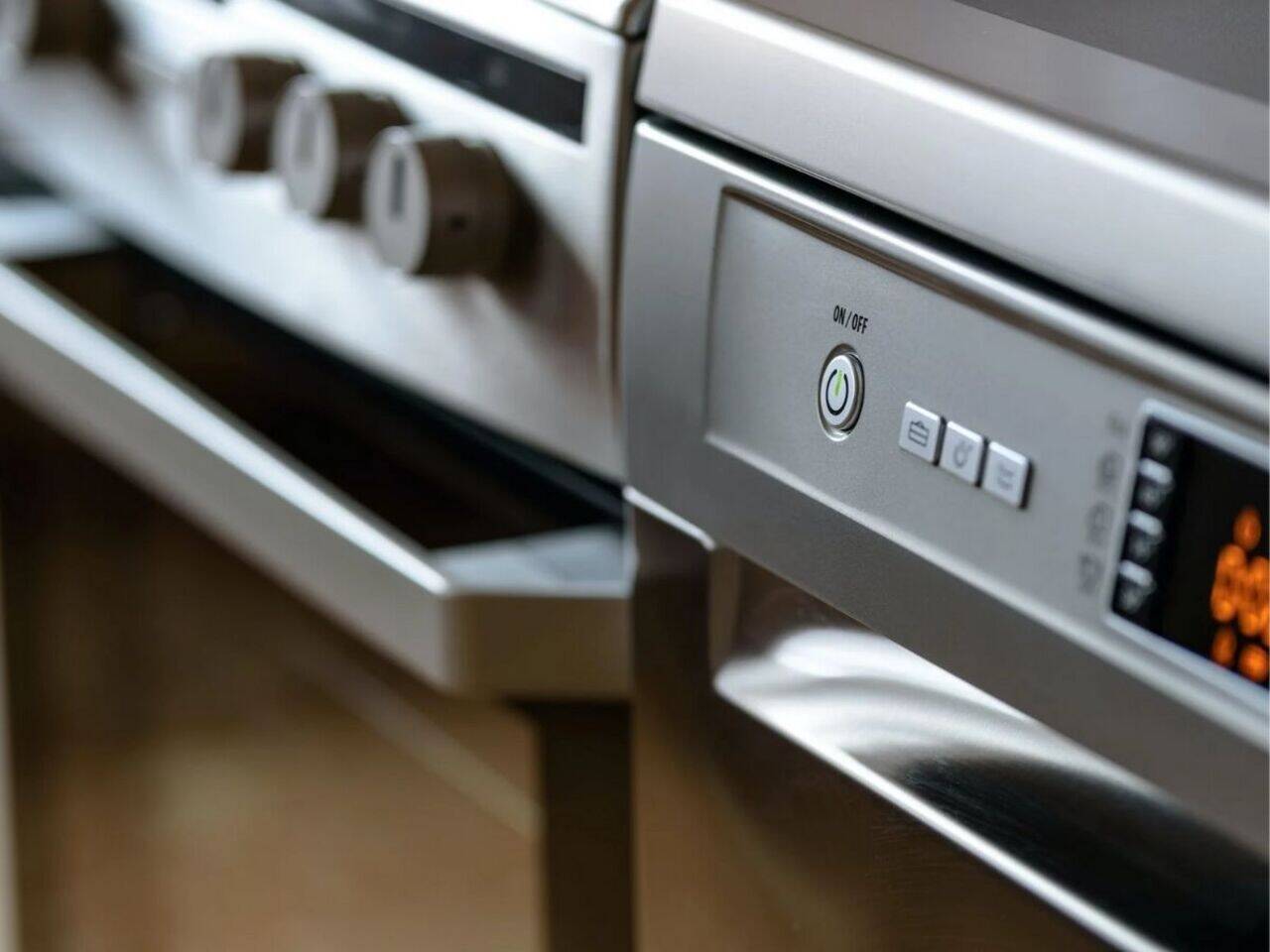Are you considering installing a solar power system at home, but don’t know which inverter to choose? You’re in the right place!
Here, we’ll guide you through the process of selecting the perfect inverter for your home’s needs. With our help, you’ll have no trouble making an informed decision and picking the best option for your situation.

An inverter is a key component of any solar energy system, necessary for transforming the direct current (DC) electricity generated by solar panels into the alternating current (AC) electricity needed to power your home. Choosing the best inverter for your project can be a daunting task since the technology and industry terminology used can be challenging to understand.
However, by looking at some important factors such as power ratings, efficiency, size and cost, you will be able to find the most suitable inverter for your own needs. In this guide we will discuss these factors in detail so that you can confidently choose your ideal inverter.
Definition of an inverter
An inverter is an electronic device that converts direct current (DC) power to alternating current (AC) power. It is typically used as an important part of a solar energy system which converts the direct current electricity generated from photovoltaic panels into alternating current electricity used in most homes.
An inverter can also be used to connect a generator or other electrical devices to the home’s electrical system. Inverters come in many sizes and forms, ranging from small portable models to large industrial grade models that are used for large-scale solar installations.
It is important to select the right size and type of inverter for your home when considering installing a solar energy system or other electrical device that requires an inverter.
Understanding Your Power Needs
Accurately determining the power needs of your home is essential in selecting an inverter. An inverter converts direct current (DC) electricity, stored in batteries, to alternating current (AC) electricity. With a broad selection of inverters available in different sizes and categories, selecting the best one for your home can be confusing. To ensure you make a wise decision and buy the right inverter for your home, you first need to understand your power needs.
When selecting an inverter for your home you should consider three parameters – wattage rating, start-up surge watts or peak wattage and voltage rating. Wattage refers to the amount of electrical power used by electronic appliances over time while voltage is the measure of electric potential or pressure between two points in a circuit expressed in volts (V) and amps (A).
You should determine the maximum continuous wattage load that will be drawn from the inverter by adding up all the watts ratings of all connecting devices. The sum total multiplied by 1.25 will indicate start-up Surge Watts or Peak Wattage requirements of an Inverter that can handle those connections simultaneously without overload or any degradation in performance. Inverters come with certain Voltage Ratings such as 12V DC 24V DC 48V DC which are to be matched with Battery Voltage Rating from which it will draw its energy when AC mains fails. Suitably match battery voltage with applicable Inverter Voltage Rating for efficiency and cost optimization before buying it for direct applications.
Determining the electrical load of your home
Determining the electrical load of your home is the most important step in selecting the right inverter for your needs. An inverter’s power is measured in watts or kilowatts (kW), and you must generally choose an inverter that can supply enough power to cover your home’s electrical loads.

Your home’s electrical usage is typically calculated by figuring out its total wattage. The total wattage is determined by adding up all of the individual appliance wattages and other loads (such as lights, outlets, etc.) that will be connected to it.
In order to make sure you have enough capacity for other appliances or possible upgrades, you should plan on sizing an inverter that is at least 25% larger than your current estimate. This will help ensure you’re not running at close to maximum capacity and risk possibly overloading it.
Identifying the peak and average power requirements
The power requirements for your home will depend on the electronic appliances and devices that you need it to run. To accurately determine the peak and average power needs of a device, it is important to consult with a certified inverter professional. A professional should be able to use a meter to identify your total power requirement as well as individual peak and/or average requirements. This information can then be used when selecting an appropriate inverter size.
When calculating the power demand of all the households’ appliances, it is essential to remember that some household items such as air conditioners or electric ovens may have extremely large starting requirements during peak times, so these appliances must be accounted for when sizing an inverter. Additionally, the load of each appliance should also be taken into consideration; if there are multiple items running simultaneously their combined load must not exceed the inverters’ maximum rated capacity.
III. Types of Inverters
When it comes to choosing an inverter for your household, there are several types of inverters that you must consider. An inverter is an electrical device that converts direct current (DC) to alternating current (AC). This AC power can then be used in homes and other applications. The type of inverter you choose will depend on the specific application and power output requirements.
The three main types of inverters are pure sine wave, modified sine wave, and quasi-sine wave. Pure sine wave inverters offer the highest quality and most reliable output, making them a great choice for sensitive equipment like computers. Modified sine wave inverters are a more economical option but will not necessarily be suitable for all appliances due to its lower quality output voltage waveform shape than pure sine wave. At the lowest end of the spectrum, quasi-sine wave inverters have limited applications due to its highly distorted output voltage.
In summary, before selecting a type of inverter for your home or appliance, you must first assess your individual needs according to the power requirements and budget limitations of the application. By understanding what sets each type of electrical system apart from another, you can make an informed decision when it comes time to power up your home or office.
Stand-alone Inverters
Stand-alone inverters are the most common type of inverters used in residential homes. They are used to convert the direct current (DC) stored in batteries into alternating current (AC). Most of them provide AC power only, without any battery backup or surge protection, and are suitable for powering small home appliances.

Stand-alone inverters come with various features such as overload protection, thermal shutdown, and input/output control, to ensure smooth operation. Generally speaking, they range in size from 1 kW to 10 kW and they can be used with both on-grid and off-grid solar power systems.
The key benefits of stand-alone inverters are their low cost and ease of installation.
Grid-tied Inverters
Grid-tied inverters are connected directly to the grid and they allow you to use the power generated by your solar panels even when the grid is down. These inverters use what’s known as “string technology” which means they will provide maximum output regardless of weather conditions or number of panels connected. Grid-tied inverters are more efficient than their off-grid counterparts, making them a popular choice for homes and businesses. However, they should not be used in areas where the grid goes down often or for long periods of time.
Here are some points to consider when choosing a grid-tied inverter:
- Ensure that the size of the inverter matches up with your system’s size and energy needs;
- The efficiency rating of the unit is important;
- Look at features such as built-in surge protection, direction connection monitoring, frequency and voltage control;
- Make sure that it can connect with all of your solar components if you have more than one panel;
- Choose an advanced digital inverter with minimal noise levels and maximum durability;
- Consider any cost implications such as installation fees before making a final commitment.
Choosing the Right Inverter
Choosing the right inverter for your home depends on a number of factors, including the type of battery you will be using and the power requirements of your appliances. Before purchasing an inverter, it is important to understand its capabilities.
First and foremost, determine what type of battery you will be connecting it to and check the manual for more information about its specific requirements for the inverter voltage ranges. It is also essential to find out its required power consumption, as different models have different wattage capabilities. If you plan to use multiple appliances simultaneously or will have several electrical items running at once, a higher wattage inverter may be necessary in order to ensure that your appliances run without interruption or overheating.
You should also factor in any additional features that you may need, such as protections from overcharging or from surges. Finally, make sure that the dimensions of your chosen model match those of your battery so that it fits properly when installed.
Selecting the inverter type based on power needs
Choosing an inverter for your home can be a complicated and daunting task. To determine which type of inverter will best meet your needs, you must first consider determining the power requirements for your application. This can vary depending on the types of appliances and electronics you plan to run.

In general, there are two main categories of inverters: pure sine wave and modified sine wave inverters. Pure sine wave or true sine wave inverters are the best choice for most applications as they are able to create clean and reliable AC power that is free from interference. Pure sine wave is also better at handling load variations, so it is often recommended for powering devices such as computers and other sensitive electronics. Modified sine wave inverters are more affordable than pure sine models but do not provide as high quality output, making them less suitable for sensitive appliances or electronics.
By considering the power needs of your application, it’s possible to make an informed decision on what type of inverter will work best in any given situation and determine the right size and model.
Comparing efficiency and performance of different types
When selecting an inverter for your home, it is important to compare the efficiency and performance of different types. Inverters come in a variety of power ratings, for example, 600 watts to 7000 watts. Different types of inverter can be distinguished by their features, such as frequency conversion speed, harmonic distortion level and efficiency. The most common types are pure sine wave inverters and modified sine wave inverters.
Pure Sine Wave Inverters produce an AC output that is close to a perfect sine waveform, which is identical to the one provided by electricity suppliers. This type of inverter will typically provide higher power quality than modified sine wave or stepped sine wave models as it does not distort other electrical components connected to the system. Pure Sine Wave Inverters also provide greater energy conversion efficiency and stability of operation when compared with modified or stepped sine wave models due to the closer match with commercial AC power sources.
Modified Sine Wave Inverters are cheaper than pure sine wave ones and can provide adequate performance in certain applications. Although they produce a distorted output voltage (a square-like signal), they are generally easier on electronic equipment than stepped sine waves, making them suitable for powering general home appliances such as washing machines, refrigerators and microwaves. Modifying or stepping signals can cause damage to sensitive electronic components found in consumer electronics like flat-panel TVs and gaming systems over time as unsuitable frequencies could upset their operation.
Additional Considerations
When selecting the right inverter for your home, there are a few additional considerations to keep in mind.
Power Rating: Choosing an inverter with a higher power rating than the necessary amount will provide a buffer in case power requirements increase. Some models may even have an option to add additional batteries or panels when necessary.
Efficiency and Overload Handling: An efficient model ensures that you get the most out of your energy while avoiding losses due to excess heat. Models equipped with overload protection also help by automatically shutting off when too much current is flowing through the system. Additionally, some manufacturers offer surge protectors which can help avoid potential damage should an unexpected spike occur on your AC lines.
Safety Features: Quality inverters will often come with basic safety features like short circuit protection, temperature control, and fuse protection. Choose one that meets the highest safety standards for secure operation of your appliances and system components.
Noise Production: Many inverters produce low-level humming noises as a result of energy conversion processes taking place inside them. If you have sensitive family members who need undisturbed rest or work from home regularly, it may be worth opting for a quieter model to make sure you don’t disturb them.
Monitoring and control features
For those who are looking for advanced features, monitoring and control should be a primary consideration when choosing an inverter for your home. Monitoring and control features can help ensure that your panels are operating optimally and that you’re able to get maximum energy storage capacity out of your system.
Monitoring and control capabilities can allow you to access information like solar panel production data, view energy usage in real-time, track energy productions over time, identify issues within the solar system such as inverter faults or blown fuses. Some advanced systems also let you adjust settings remotely such as the amount of energy being sent back to the grid or sending it into your home battery. Understanding these capabilities can help you choose the right inverter that is tailored to your needs.
Warranty and support
A trusted manufacturer’s warranty and strong customer support are essential when choosing an inverter for your home. The warranty period should cover all main components of the inverter and any additional features you have purchased.
A quality-driven company will also offer maintenance, repairs and technical support without charging extra costs in the future. Look into whether a company provides strong after sales and 24/7 customer service to ensure optimal usage of your investment.
Furthermore, consider the presence of certified technicians and dealers in your area or online to give you peace of mind that you can contact trained professionals if needed.
Conclusion
In conclusion, choosing the right inverter for your home is an important decision. It is important to carefully evaluate your personal needs and preferences, as well as the load requirements for specific appliances. You should also consider size, cost, safety features and brand reputation when making your choice. With so many different models on the market today, there is sure to be an inverter that meets all of your requirements.
Taking these steps will ensure that you select an inverter that will be reliable and cost efficient now and in the years to come.
See Also-
- Best Power Inverter For Truck
- Best Power Inverter
- Best Pure Sine Wave Inverter
- Best RV Inverter 2023
- Best Solar Inverter 2023
